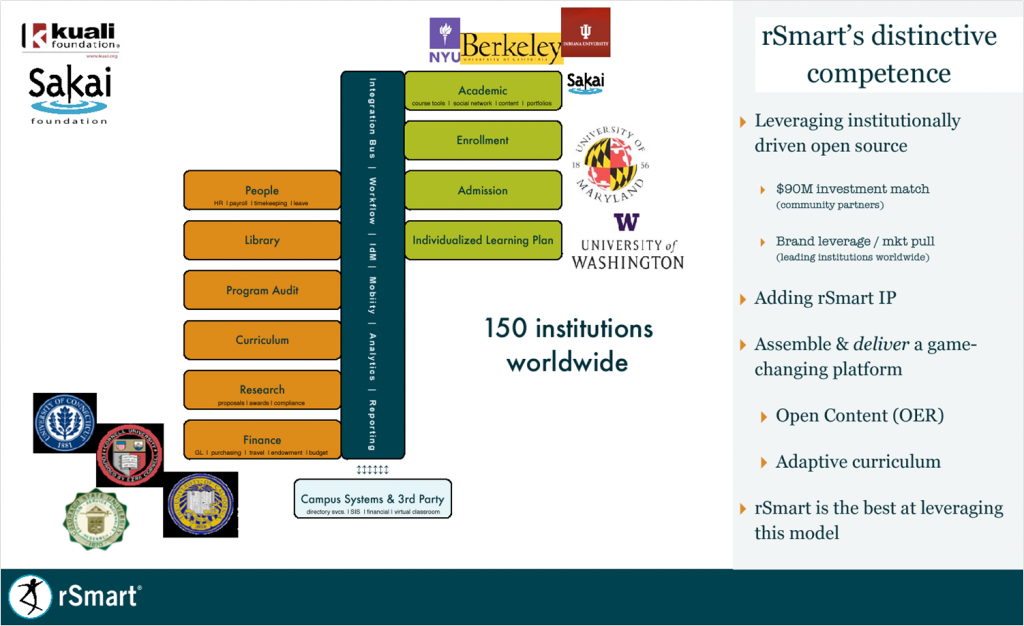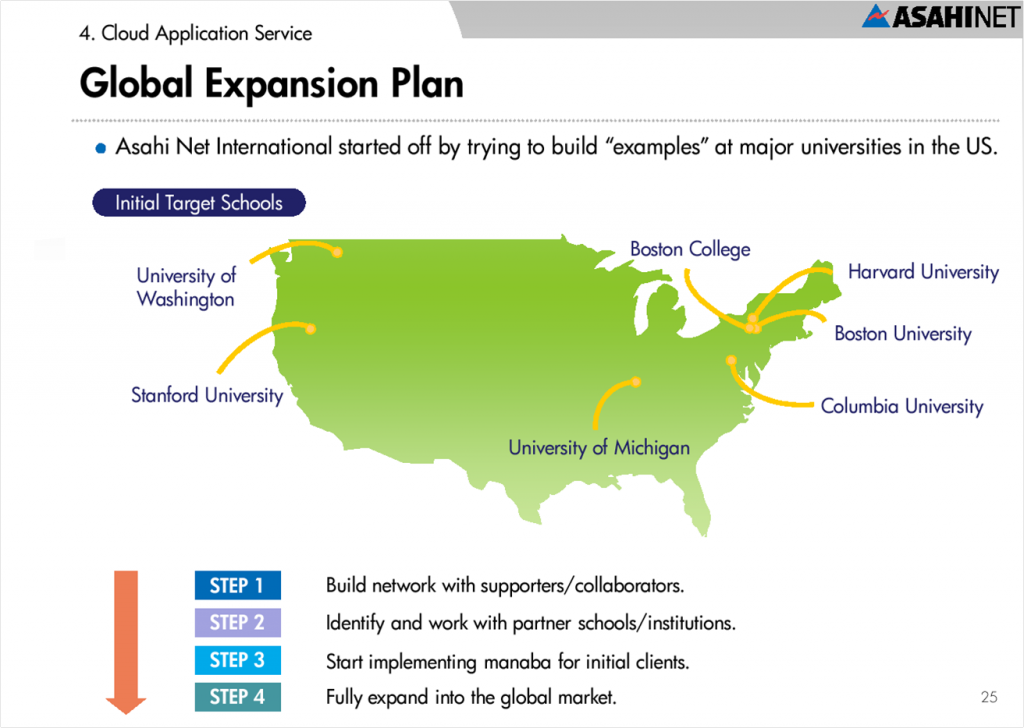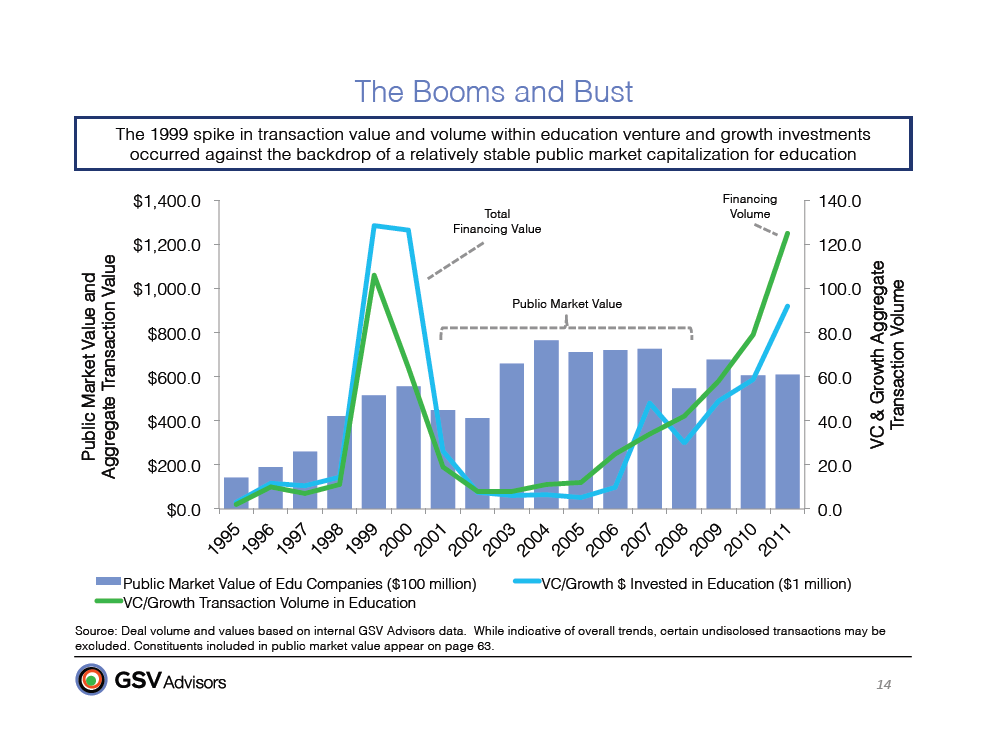
rSmart is a more mature and experienced company than the 26 others who presented at the “sold out” April “Education Innovation Summit.” GSV Advisors and Arizona State University hosted the third annual Summit with presentations on innovation and by new companies seeking to enter the education market. (Presentations are available here; rSmart’s presentation is available here and here). rSmart has participated in the Kuali and Sakai open source software initiatives to meet the needs of colleges and universities. Moe lists open source as a major trend in education. rSmart also has had an international presence teaming with Asahi Net Inc. and its U.S. subsidiary in cloud services. rSmart Chairman John Robinson is a visionary with 35 years experience with innovative higher education software technology. rSmart is one of the first to contribute to software architecture that spans both administration and learning using current software design techniques and technology—a goal of the Kuali Foundation.
“Why does GSV like rSmart?”
There is a major shift underway in the higher education software market today, largely driven by continuing IT budgetary constraints, demand for higher ROI [return on investment] on technology investments, and most critically, the rapid consolidation of alternative LMS platforms. Today, rSmart is the only company in the marketplace offering a full suite of open-source solutions for higher ed enterprise software. [emphasis added]
The press reports: “rSmart has over 250 customers, including large state universities like the University of California, smaller private schools such as Brown [University], community colleges, and trade schools.” [Note: The correct number of rSmart’s customers is over 100, not 250.] “rSmart is based in Scottsdale, Arizona and has 79 employees.”
rSmart received seed funding of $500,000 from GSV Capital in 2011 and an additional $750,000 in the first half of 2012 (with transaction costs of $16,940).
Asahai Net Inc. is a rapidly-growing Internet Service Provider in Japan. Founded in 1990 with US$8 million capital the company has grown to net assets of US$104 million. The company’s operating profit now stands at 24.4% of sales supporting rapid internal growth. The company is proud of its nine-year J.D. Powers ranking as number one for Internet service.

The company has had a several years experience working with rSmart.
GSV Capital is a Regulated Investment Company (RIC) that provides tax benefits for investors. RICs must file reports with the U.S. Securities and Exchange Commission; this gives additional insights into their activities. GSV Capital is also a business development company;
… we are required to offer, and in some cases may provide and be paid for, significant managerial assistance to portfolio companies. This assistance typically involves monitoring the operations of portfolio companies, participating in their board and management meetings, consulting with and advising their officers and providing other organizational and financial guidance.
As other Silicon Valley venture capitalists, GSV participates in the management of the startups it funds.
GSV Capital invested in 12 education firms before July 1st and one additional firm since. GSV Capital’s investment in rSmart is 2.2% of the company’s total portfolio of $171,598,410 (at cost). 34.1% of the portfolio is invested in education. GSV Capital holds 11.6% of the rSmart investment and others—including Asahi Net Inc.—hold 88.4%.
GSV Capital investments are often made in preferred stocks that can provide dividends even if the firm has a need for capital or is operating at a loss. These dividends—less expenses—pass through untaxed to GSV stockholders.
In the SEC filings GSV Capital provides the typical comment of investors in start-up companies:
We have limited information about the financial performance and profitability of our portfolio companies. While according to public filings with the SEC, certain of our portfolio companies have earned net income in recent periods, we believe that substantially all of our portfolio companies are currently experiencing operating losses. There can be no assurance when or if such companies will operate at a profit
The start-ups are measured on growth—enrolment in the case of recent start-ups like Coursera and Udacity—and are expected to be profitable before these measures begin to slow.
Michael Moe is well known and well respected in the investment community. He began focusing on “under invested” education in the 1990s as profit-making private colleges and universities expanded to accommodate working students who could not attend traditional institutions.. He authored the definitive education market research book “The Dawn of the Age of Knowledge” in 1996 followed by “The Book of Knowledge” in 1999 and “The Knowledge Web, Parts 1 and 3” in 2000 and recently “The American Revolution 2.0.” [Available here].

Moe participates in the education reform movement as a member of the Board of Directors of the Center for Education Reform.
But will the sharp decrease in the stock prices for Facebook and Groupon cool enthusiasm for innovation and startups? GSV Capital earlier invested $12.6 million in Facebook and Groupon , but Moe argues:
When uncertainty is in the air or blood is in the water, all the positive attributes get overshadowed by a cascade of “buts” — “yeah, they are growing fast BUT they haven’t figured out mobile”. ”Of course they don’t have any competition today BUT the big guys are all getting into the space”. With the “Sky is Falling” mindset, investors look at numbers in the rear view mirror where growth companies valuations look absurd.
Moe continues to “look ahead.” Investors following his lead have been very successful.
GSV Advisors continues to maintain its positive attitude. Their research shows capital flows into higher education firms of $1.5 billion from 2001 through 2011 as compared $985 million 1985 through 2000. Since 2007 the transaction value for all education companies has increased 70.4%. “As compared to the 1999-2000 period, the current level of investment activity reflects more proven management and business models as well as more nuanced investor interest.”
Higher education should follow private equity carefully. It may make the investments in teaching and learning that higher education could have made the past decade. It could create, productize, and support implementation of innovation that higher education has not yet done. It could, through public awareness and opinion, engage higher education is a series of failed experiments. Which of these follows depends upon higher education’s productive partnership with the investment community.